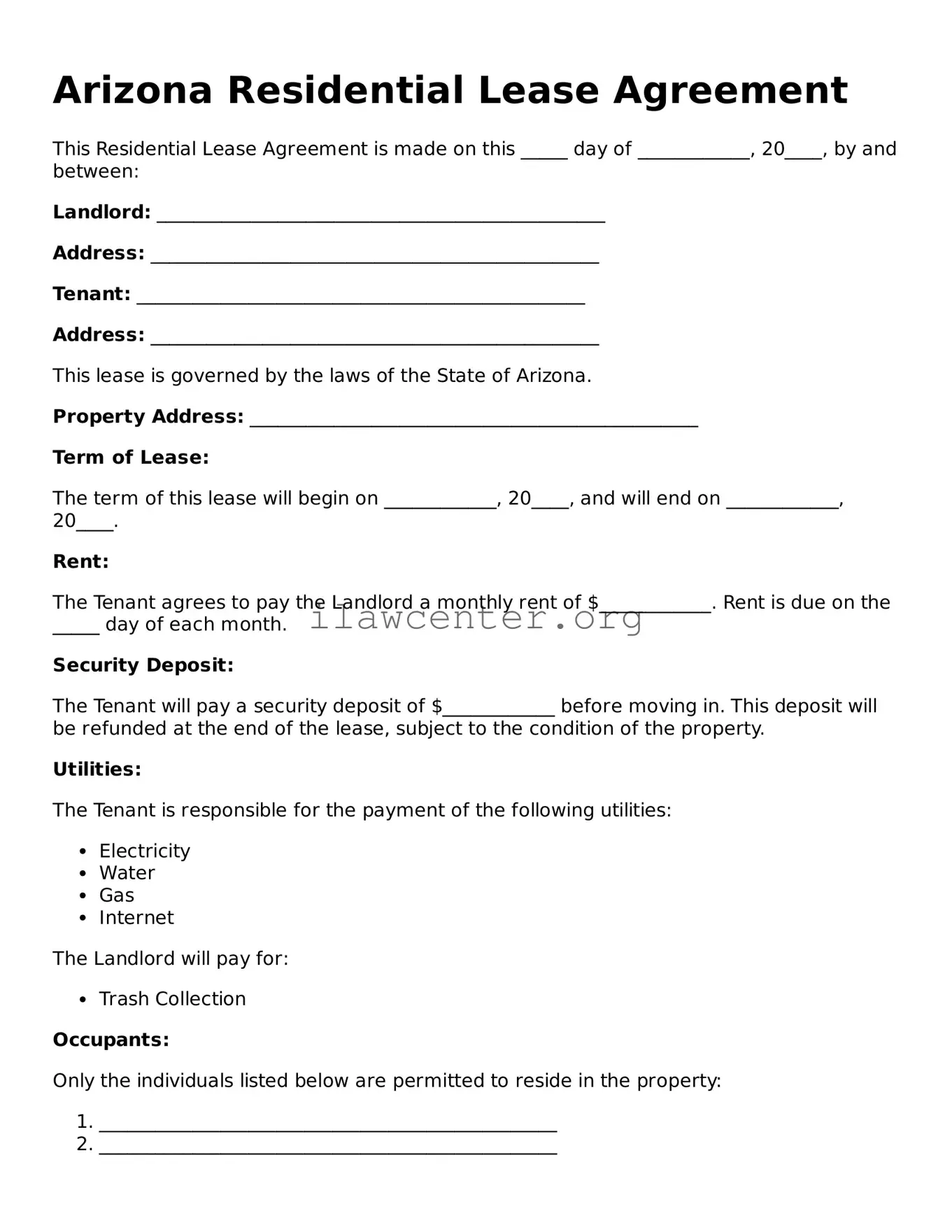Instructions on Utilizing Arizona Residential Lease Agreement
Completing the Arizona Residential Lease Agreement form is essential for establishing a clear rental agreement between landlords and tenants. It provides specific details that both parties need to agree upon before signing. Below are the steps to effectively fill out the form.
- Begin by entering the date at the top of the agreement.
- Fill in the name of the landlord and the tenant(s) next. Make sure to include all parties involved in the lease.
- Specify the property address, including street number, street name, city, and state.
- Indicate the lease term, such as “12 months” or another specified duration. Include the start and end date of the lease.
- Insert the monthly rent amount. This should be the amount the tenant will pay each month for the property.
- Identify the due date for rent payments, specifying whether it’s due on the first of the month or another date.
- Outline any security deposit requirements, including the amount and the conditions for its return.
- If applicable, include any additional fees or charges, such as utilities or maintenance fees, that the tenant will be responsible for.
- Clarify any rules and regulations that tenants must follow, including policies on pets, noise, or maintenance.
- Ensure to sign and date the agreement at the designated sections for both the landlord and tenant.
